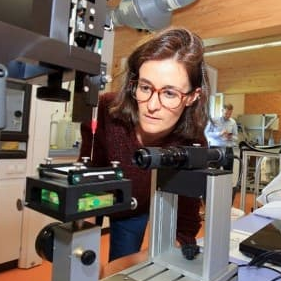Applications of Membrane Processes in Desalination, Wastewater Treatment and Resource Recovery
A special issue of Membranes (ISSN 2077-0375). This special issue belongs to the section "Membrane Applications".
Deadline for manuscript submissions: closed (20 December 2023) | Viewed by 6672
Special Issue Editors
Interests: resource recovery; electrodialysis; ion exchange membranes; water and wastewater treatment; waste valorization; water purification
Special Issues, Collections and Topics in MDPI journals
Interests: membrane science and engineering; purification and concentration processes; transport phenomena; resource recovery; circularity
Special Issues, Collections and Topics in MDPI journals
Interests: membrane separation; desalination; membrane filtration; water and wastewater treatment; ultrafiltration; water purification technologies; material characterization; polymers; separation technology; water purification
Special Issues, Collections and Topics in MDPI journals
Interests: membranes; resource recovery; waste to product; acid water; seawater; nanofiltration; electrodialysis; liquid–liquid membrane contactors; ion-exchange resins; agro-food recovery
Special Issues, Collections and Topics in MDPI journals
Interests: chemical engineering; membrane crystallisation; reactor chemistry; ultrafiltration; biogas upgrading; resource recovery; ion-exchange resins and membrane separation-purification
Special Issue Information
Dear Colleagues,
Society is facing an increasing demand for energy and resources; however, there is also pressure for more sustainable supply chains. In this sense, membrane technology, a term that refers to several different processes that use synthetic membranes to separate chemical substances, has been recognized as a primary technology for the purification of water, wastewater, and resource recovery. Membrane technology plays a crucial role in the resource recovery theme because of its significance for the environment and economic attractiveness; these qualities are necessary for the fair green development proposed by sustainable agendas that have become a meaningful pillar of our society. Therefore, Membranes is launching a Special Issue, which aims at gathering relevant research on membrane processes, not only as industrial solutions for waste stream treatment but also in recovering valuable materials from effluents. This Special Issue welcomes various articles, including original research, reviews, short communications, and industrial cases.
Dr. Tatiana Scarazzato
Dr. Elena Guillen Burrieza
Dr. Marco Antonio Siqueira Rodrigues
Dr. Mònica Reig
Dr. Mehrez Hermassi
Guest Editors
Manuscript Submission Information
Manuscripts should be submitted online at www.mdpi.com by registering and logging in to this website. Once you are registered, click here to go to the submission form. Manuscripts can be submitted until the deadline. All submissions that pass pre-check are peer-reviewed. Accepted papers will be published continuously in the journal (as soon as accepted) and will be listed together on the special issue website. Research articles, review articles as well as short communications are invited. For planned papers, a title and short abstract (about 100 words) can be sent to the Editorial Office for announcement on this website.
Submitted manuscripts should not have been published previously, nor be under consideration for publication elsewhere (except conference proceedings papers). All manuscripts are thoroughly refereed through a single-blind peer-review process. A guide for authors and other relevant information for submission of manuscripts is available on the Instructions for Authors page. Membranes is an international peer-reviewed open access monthly journal published by MDPI.
Please visit the Instructions for Authors page before submitting a manuscript. The Article Processing Charge (APC) for publication in this open access journal is 2700 CHF (Swiss Francs). Submitted papers should be well formatted and use good English. Authors may use MDPI's English editing service prior to publication or during author revisions.
Keywords
- membrane technology
- water purification
- resource recovery
- process integration
- wastewater treatment
- added-value products
- industrial application








